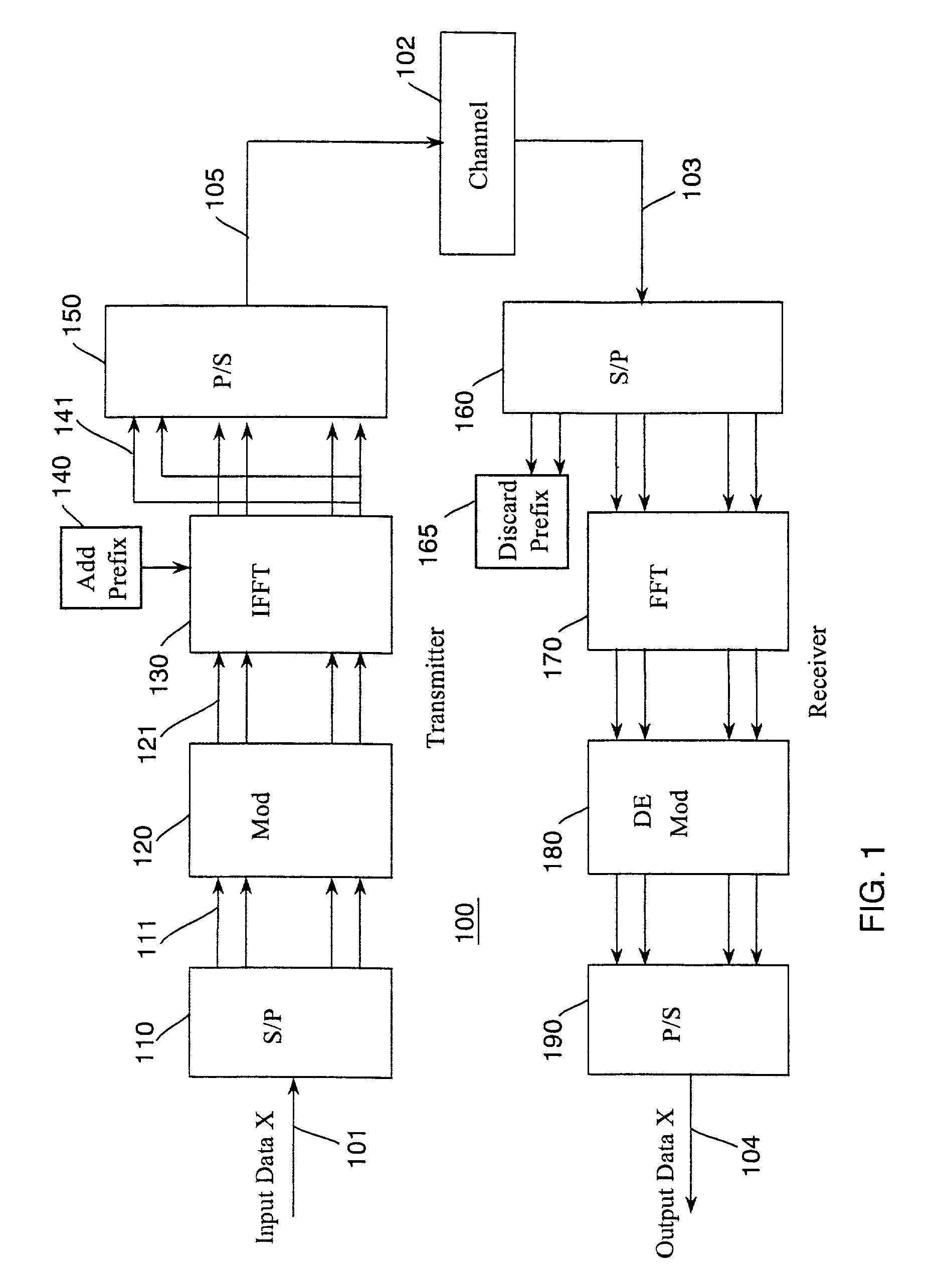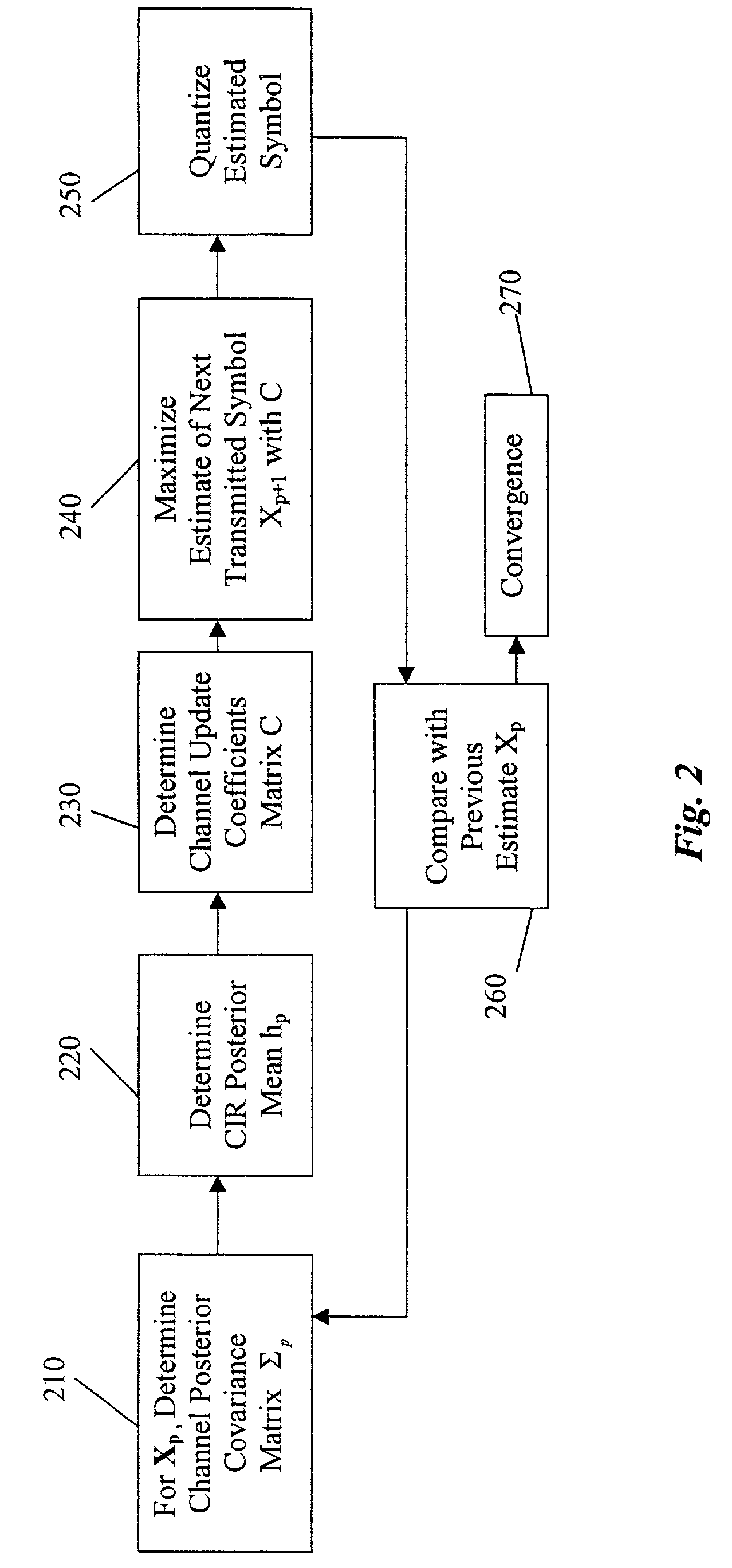Expectation-maximization-based channel estimation and signal detection for wireless communications systems
a wireless communication system and channel estimation technology, applied in the field of communication systems, can solve the problems of large error floor, inability to make reliable data decisions in ofdm systems, and loss of snr compared to coherent detection, so as to improve signal detection accuracy, efficient channel estimation, and improve signal detection
- Summary
- Abstract
- Description
- Claims
- Application Information
AI Technical Summary
Benefits of technology
Problems solved by technology
Method used
Image
Examples
Embodiment Construction
Expectation-Maximization
[0019]Our invention uses an expectation-maximization (EM) method to estimate statistical characteristics (parameters) of a wireless communications channel, and to detect signals in the estimated channel.
[0020]The EM method according to the invention includes two iterative steps: an expectation step and a maximization step. The expectation step is performed with respect to unknown underlying channel parameters, using a previous estimate of the parameters, conditioned upon incomplete observations. The maximization step then provides an improved estimate that maximizes the expectation of a log likelihood function defined over complete data, conditioned on the previous estimate and the next estimate. These two steps are iterated until the estimated values converge. See A. P. Dempster, N. M. Laird and D. B. Rubin, “Maximun likelihood estimation from incomplete data,”Journal of the Royal Statistical Society (B), Vol. 39, No. 1, 1977, pp. 1–38, and T. K. Moon, “The ...
PUM
 Login to View More
Login to View More Abstract
Description
Claims
Application Information
 Login to View More
Login to View More - R&D
- Intellectual Property
- Life Sciences
- Materials
- Tech Scout
- Unparalleled Data Quality
- Higher Quality Content
- 60% Fewer Hallucinations
Browse by: Latest US Patents, China's latest patents, Technical Efficacy Thesaurus, Application Domain, Technology Topic, Popular Technical Reports.
© 2025 PatSnap. All rights reserved.Legal|Privacy policy|Modern Slavery Act Transparency Statement|Sitemap|About US| Contact US: help@patsnap.com



